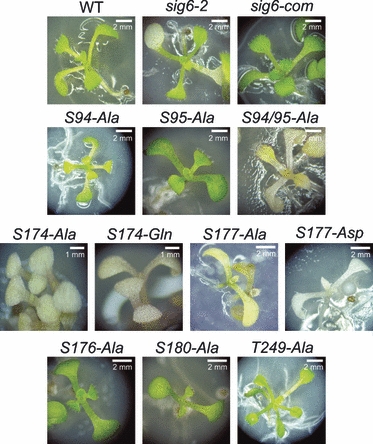Figure 4.

Phenotypic features of Arabidopsis sig6 mutant lines carrying altered phosphorylation sites.Plates show 14-day-old plantlets representing the wild type (WT), the parental sig6-2 knock-out line and the retransformed lines generated by cDNAs for either authentic AtSIG6 (sig6-com) or AtSIG6 derivatives, with exchange of residues 94, 95, 174, 176, 177, 180 or 249, as indicated. Several of the latter lines resemble the wild type in growth and pigmentation (S94-Ala, S95-Ala, S176-Ala, S180-Ala and T249-Ala), whereas others reveal a chlorophyll-deficient phenotype (S94/95-Ala, S174-Ala, S174-Gln, S177-Ala and S177-Asp) comparable with that of the parental sig6-2 knock-out (sig6-2). S, serine site; T, threonine site.
